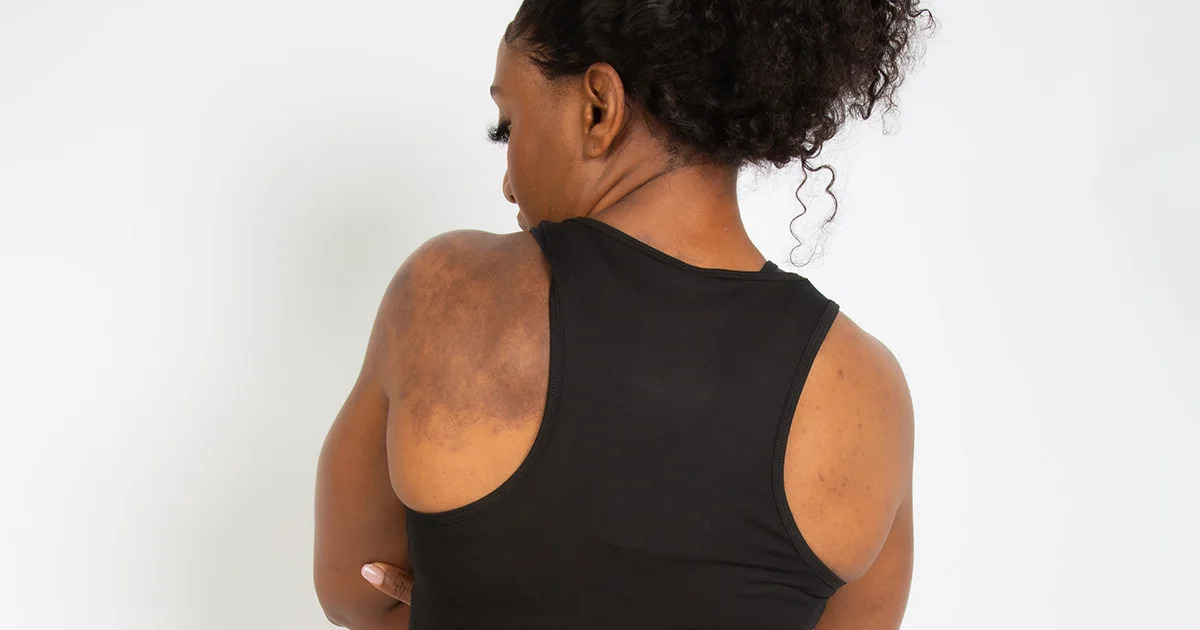Here's what we'll cover
Here's what we'll cover
Bulking and cutting are bodybuilding terms. They describe the two main phases of competitive bodybuilding (Lenzi, 2021).
During these phases, bodybuilders are trying to change their body composition through muscle growth and added mass (bulking) or by getting leaner and lowering body fat percentage without muscle loss (cutting).
To understand bulking and cutting, it’s helpful to think about the process of clay modeling. You have to build up a mass of clay before you can carve it down. Likewise, bulking and cutting build up size and muscle and then carve it down to create definition.
Cardio and resistance training remain key parts of both phases. The most significant difference between the two has to do with the types and amounts of foods you eat.
What is bulking?
Bulking is the building-up stage of bodybuilding. If you’re bulking, you’re trying to build muscle and gain weight—but ideally, not fat. You accomplish this by eating a specialized diet that ensures you’re eating more calories than you burn (Lenzi, 2021). Put simply: bulking is about getting bigger.
Competitive bodybuilders usually spend most of their time in the bulking phase. Then, three to four months before a competition, they switch to cutting (Lenzi, 2021).
What is cutting?
The cutting phase is about modest weight loss and fat loss—but not muscle loss. You can do this by eating a specialized diet that keeps your calorie intake below what you typically burn (Lenzi, 2021).
Bulking vs. cutting: pros and cons
Done right, the pros of each are self-evident. During bulking, you’ll gain mass while building muscle. During cutting, you’ll lose fat while increasing muscle definition. But both bulking and cutting require careful and strict dieting. In either case, you’ll have to watch what you eat and drink, which isn’t always fun (Lenzi, 2021).
When it comes to bulking, a downside for some is that there will likely be some fat gain. That’s especially true if you practice "dirty bulking". Unlike a clean bulk, a dirty bulk involves traditionally "unhealthy" foods—like eating more-than-moderate amounts of processed foods—that promote fat as well as muscle gains.
Another downside of bulking is that you’re going to have to eat more. Maybe a lot more. While that may sound fun, eating when you’re full is no picnic. Also, you’ll have to stay away from unhealthy ultra-processed snack foods if you want to add healthy weight (Monteiro, 2009; Iraki, 2019).
Cutting, on the other hand, may involve eating way less than you’re used to eating. A study of competitive bodybuilders found that during their cutting phase, bodybuilders ate 30% fewer calories. Their consumption of protein, carbohydrates, and especially fat went way down (Lenzi, 2021).
Getting results with bulking and cutting
Whether you’re bulking or cutting, you probably want to see results as quickly as possible. But researchers have found that, in both cases, slow and steady is a better approach.
Bodybuilders who put on weight gradually, as opposed to quickly, are less likely to add fat along with lean muscle mass. Meanwhile, bodybuilders trying to cut fat are more likely to hold onto their lean muscle mass if they lose weight slowly (Iraki, 2019; Lenzi, 2021).
Before you can effectively bulk or cut, you need to know your baseline energy expenditure. In other words, you need to know how many calories your body requires to maintain its current weight. You can use an online calorie calculator like this one from the Mayo Clinic to get an idea of your caloric needs.
Once you have your baseline energy expenditure, to effectively bulk or cut, you’re going to need to do a little math:
If you’re bulking, your goal is to add between .25% and .5% of your total body weight each week. If you weigh 180 pounds, that means you’re trying to add roughly 0.5 to 1 pound per week. To hit this target, you want to eat 10% to 20% more calories than your baseline. Basically, you want to create a calorie surplus (Iraki, 2019).
If you’re cutting, your goal is to drop between 0.5% and 1% of your weight each week (Lenzi, 2019). Getting even more fine-grained, some research has found that—if you want to maintain strength and lean muscle mass while dropping weight—losing 0.7% of your weight each week may be optimal. To do that, aim to cut your daily calorie intake by roughly 20%. In other words, create a calorie deficit (Garthe, 2011).
Whether you’re bulking or cutting, it’s helpful to design your meal plans and diet around the three major macronutrient groups. These “macros” are protein, carbohydrates, and fats.
Macronutrient targets for bulking
If you’re trying to decide whether to eat more fats, proteins, or carbohydrates to hit your daily calorie targets, the bulking research suggests you prioritize protein and carbs (Iraki, 2019).
Protein: Every day, your goal is to eat roughly 1.6 to 2.2 grams of protein per kilogram of body weight (g/kg/day). That means if you weigh 180 pounds (approx. 82 kg), your daily protein intake should land somewhere between 131-180 g (Iraki, 2019). While you may hear of bodybuilders eating even more protein, research suggests going above this range—though common—is a waste of money and calories (Lenzi, 2021).
Carbohydrates: Aim to eat 3-5 g/kg/day of carbohydrates (Iraki, 2019). Here again, what you hear around the gym may be misleading. Researchers have found that low-carb bulking approaches have become popular. But avoiding carbs can limit your ability to pack on lean muscle mass while bulking (Lenzi, 2021).
Fats: The American Council of Sports Medicine recommends getting between 20% and 35% of your calorie intake from fats (ADA, 2009), which should work out to about 0.5 to 1.5 g/kg/day (Iraki, 2019).
Macronutrient targets for cutting
There isn’t a lot of strong research comparing different cutting diets. But a recent study of competitive bodybuilders found that most don’t talk with nutrition experts when planning their diets. Not surprisingly, most of these self-made diets aren’t optimal (Lenzi, 2021).
If you want to roll with science, research has found that the following macronutrient targets are effective if you want to maintain muscle mass while reducing body fat (Garthe, 2011):
Protein: Your target is around 1.6 g/kg/day, or about 25% of your total caloric intake.
Carbohydrates: Your target is around 3.6 g/kg/day, or about 55% of your total caloric intake.
Fats: Try to fill the remaining 20% of your daily calories.
Again, you may hear that other bodybuilders are pumping substantially more protein into their diets. But research suggests this is not a good strategy (Lenzi, 2021).
Foods to eat when bulking and cutting
Whether you’re bulking or cutting, you want to eat nutritious foods. The difference between the two phases should involve the number of calories you swallow and your balance of macros—not your food choices.
So, for either diet, here is a list of foods to eat to hit your macros.
High-protein foods
Some examples of high-protein foods are (Bradlee, 2017):
Meats, such as beef, lamb, and pork
Poultry, such as chicken and turkey
Fish
Dairy (milk, yogurt, cheese)
Legumes (beans and peanuts), soy, nuts, and seeds
Protein powders or supplements, such as whey protein shakes
Carbohydrate-rich foods
Some examples of carbohydrate-rich foods are (Englyst, 2007):
Fruits
Vegetables
Starchy vegetables, such as sweet potatoes
Whole-grain foods, such as quinoa or whole-grain pasta
Dietary fats
Some examples of dietary fats include (Liu, 2017):
Olive oil
Avocado
Nuts and seeds
Fatty fish, such as salmon, herring, mackerel, and sardines
Peanut butter and nut butters
Dairy products, such as cheese, milk, butter, and Greek yogurt
Foods to avoid when bulking and cutting
When it comes to foods or drinks to avoid, the rules for both bulking and cutting are the same: avoid—as much as possible—packaged or heavily processed foods and beverages.
Over and over again, researchers have tied these to problematic weight gain and poor health outcomes (Monteiro, 2009).
Supplements for bulking and cutting
You’re probably wondering about supplements, which are huge in the bodybuilding world. The truth is that, apart from protein powders, very few have good evidence backing their safety and benefits (Lenzi, 2021).
But there are a few exceptions (Iraki, 2019):
Creatine acts as an energy source in skeletal muscle. Research suggests taking 3 g daily is enough to support bulking without undue health risks.
Beta-alanine, which supports strength training. Taking 3-5 g daily during training may help improve performance.
Citrulline malate, which also supports strength training performance. Taking 8 g/day just before lifting may be beneficial.
Cutting or bulking: which is right for you?
Deciding on whether you should bulk or cut depends on your goals. If you want to put on muscle mass, bulking is a better choice. If you want to lose some body fat, cutting is a more suitable option.
Whether you’re cutting or bulking, there are good and bad ways to go about it. Before starting any diet, it’s always wise to speak with a healthcare provider or a registered dietician to make sure that you’re creating a meal plan that is healthy and sustainable.
DISCLAIMER
If you have any medical questions or concerns, please talk to your healthcare provider. The articles on Health Guide are underpinned by peer-reviewed research and information drawn from medical societies and governmental agencies. However, they are not a substitute for professional medical advice, diagnosis, or treatment.
American Dietetic Association, Dietitians of Canada, American College of Sports Medicine, Rodriguez, N. R., Di Marco, N. M., & Langley, S. (ADA). (2009). American College of Sports Medicine position stand. Nutrition and athletic performance. Medicine and Science in Sports and Exercise, 41 (3), 709–731. doi: 10.1249/MSS.0b013e31890eb86. Retrieved from https://pubmed.ncbi.nlm.nih.gov/19225360/
Bradlee, M. L., Mustafa, J., Singer, M. R., & Moore, L. L. (2017). High-Protein Foods and Physical Activity Protect Against Age-Related Muscle Loss and Functional Decline. The Journals of Gerontology. Series A, Biological Sciences and Medical Sciences, 73 (1), 88–94. doi: 10.1093/gerona/glx070. Retrieved from https://pubmed.ncbi.nlm.nih.gov/28549098/
Englyst, K. N., Liu, S., & Englyst, H. N. (2007). Nutritional characterization and measurement of dietary carbohydrates. European Journal of Clinical Nutrition, 61 Suppl 1, S19–S39. doi: 10.1038/sj.ejcn.1602937. Retrieved from https://www.nature.com/articles/1602937?draft\u003dcollection
Garthe, I., Raastad, T., Refsnes, P. E., Koivisto, A., & Sundgot-Borgen, J. (2011). Effect of two different weight-loss rates on body composition and strength and power-related performance in elite athletes. International Journal of Sport Nutrition and Exercise Metabolism, 21 (2), 97–104. doi: 10.1123/ijsnem.21.2.97. Retrieved from https://pubmed.ncbi.nlm.nih.gov/21558571/
Iraki, J., Fitschen, P., Espinar, S., & Helms, E. (2019). Nutrition Recommendations for Bodybuilders in the Off-Season: A Narrative Review. Sports (Basel, Switzerland), 7 (7), 154. doi: 10.3390/sports7070154. Retrieved from https://pubmed.ncbi.nlm.nih.gov/31247944/
Lenzi, J. L., Teixeira, E. L., de Jesus, G., Schoenfeld, B. J., & de Salles Painelli, V. (2021). Dietary Strategies of Modern Bodybuilders During Different Phases of the Competitive Cycle. Journal of Strength and Conditioning Research, 35 (9), 2546–2551. doi: 10.1519/JSC.0000000000003169. Retrieved from https://pubmed.ncbi.nlm.nih.gov/31009437/
Liu, A. G., Ford, N. A., Hu, F. B., Zelman, K. M., Mozaffarian, D., & Kris-Etherton, P. M. (2017). A healthy approach to dietary fats: understanding the science and taking action to reduce consumer confusion. Nutrition Journal, 16 (1). doi: 10.1186/s12937-017-0271-4. Retrieved from https://link.springer.com/article/10.1186/s12937-017-0271-4
Monteiro, C. A. (2009). Nutrition and health. The issue is not food, nor nutrients, so much as processing. Public Health Nutrition, 12 (5), 729–731. doi: 10.1017/S1368980009005291. Retrieved from https://pubmed.ncbi.nlm.nih.gov/19366466/









